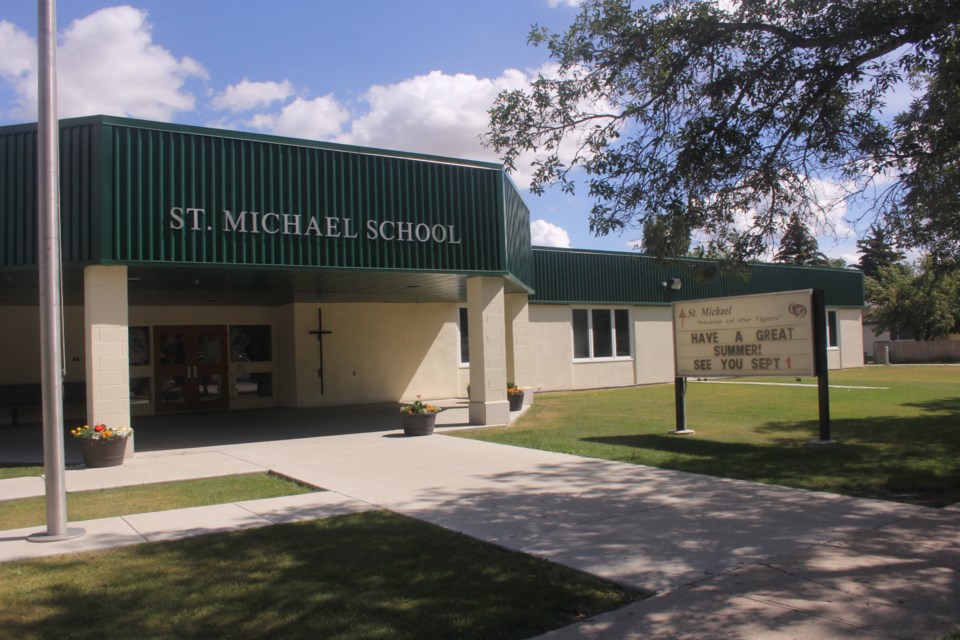The guidelines for how schools in the Holy Family Roman Catholic Separate School Division reacts to emergencies was explained to the board of trustees at their monthly board meeting on Wednesday evening, covering everything from what staff should do in the event of a fire or tornado, or how to handle a lockdown from a potential threat.
Superintendent Chad Fingler opened with the proviso that no set of procedures is able to handle all potential emergencies, as procedures are often more of a guideline that gives staff direction on how to handle a given situation.
The procedures encompass student safety, and student protection, with safety including occasions when a lockdown or evacuation would be required. Protection deals with situations including a violent threat risk assessment, and traumatic events, such as the death of a student or staff member.
One of the situations where student safety is to be considered is in the event students need to vacate their school, such as during severe weather like a tornado. In the specific case of a tornado, students would be asked to exit their classes and sit in front of lockers inside of hallways and avoid being in a gymnasium or near windows, which would be a danger zone if a tornado were to hit a school.
A school lockdown would be used if there is an unwanted or potentially dangerous visitor in the building, or in close proximity to the school. Staff are to do practices of lockdown procedures so they and the students will be aware of what should happen, and the police are also to be consulted in regard to school lockdown procedures.
Fingler told the board that an Estevan school had a lockdown recently, and noted this doesn’t always mean there is a gun in use or threatened to be in use.
For fire safety, the Weyburn Fire Department wants schools to do four fire drills a year, one in each season, but Holy Family has elected to go beyond that with 10 drills a year. Not all fire drills need to be school-wide, as each class can practice individually through the school year.
Holy Family is part of the Southeast and Area Community Threat Assessment and Support Protocol, which is a shared protocol with the local police, Social Services, both public and separate school divisions, the health region, and Mental Health and Addictions.
There is a two-stage approach to prevent violence, including that all schools have trained teams that enact the protocol. Stage one involves the trained school-level teams who review threats or potential threats in order to provide early interventions, and stage two involves the community-level team which can review threats or potential threats in order to prevent potential future violence.
Some examples of threats or violent threats include a student who displays worrisome pictures or language in school work, a student who reports that another student has threatened to cause significant harm to someone, or a student who has a weapon at school.
“The caution is to over-react to a potential threat rather than under-react,” said Fingler, noting the community threat assessment is an in-depth preventative measure to prevent a threat before it occurs.
Each class in each school in Holy Family also has a traumatic events protocol guide, which has a list of 23 items a teacher can quickly check on for a reminder of what protocols should be followed.
The items include such possibilities as a threat of violence, weapons, physical assault or rape, hostage taking or kidnapping, a suicide attempt, bomb threat, tornado, school bus crash, explosion or a chemical spill, among others.
There is also a guide provided for how staff should act after a traumatic event has occurred, such as the event of a death or serious injury to a student or staff member. The guide goes over such things as what to say to parents, respecting privacy issues or what resources a person could be referred to in the division or the community.
Fingler said one of the challenges is to counteract the rumour mill, which can start up very quickly through social media.
“We can be part of the problem if we don’t communicate in a timely way,” said education director Gwen Keith, who noted the guidelines for emergency responses “is a living, breathing document” that is constantly evolving and growing as needed.
Fingler noted they go over some of these guidelines regularly with administrators and constantly keep thinking of new scenarios and how they can address them.
Some situations aren’t high-profile, such as a violent threat, but can still be problematic if staff don’t know how to react, such as a school losing their water supply, as happened to St. Mary’s not too long ago.
“Even something that’s not worrisome could be a problem if it’s not handled right,” she said.



